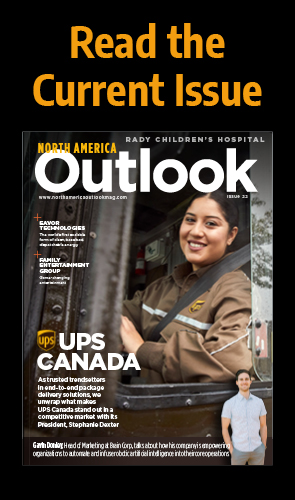Wolfram Ries and Stefan Marxreiter of Mobica map out the prospects of autonomous vehicles – the benefits, the challenges and the current timeline.
INTRODUCTION
Autonomous vehicles are living proof that the future is here.
The sort of thing that we used to see in sci-fi films, driverless cars are well on their way to becoming the new normal of global highways as auto manufacturers the world over race to develop and pilot unique variations of unprecedented technologies.
As a result, the industry is somewhat unsurprisingly expected to become highly lucrative in the relatively near-term.
According to Frost & Sullivan, the global autonomous driving market is forecast to grow $173 billion by 2030, fuelled by the multitude of technological nuts and bolts that have come to form driverless developments.
Mobica is one company established as a crucial cog in the autonomous ecosystem.
A global software services company partnering with the world’s leading automotive OEMs and Tier 1 players, it is at the heart of defining key standards that are integral to the successful roadmap of the connected car.
Answering our questions, the company’s VP of Automotive Sales Wolfram Ries and COO Stefan Marxreiter reveal how the business is embracing this role and what to expect from the autonomous vehicle space over the coming months.
Q&A WITH WOLFRAM RIES AND STEFAN MARXREITER, MOBICA
What was it that first interested you in becoming involved in the vehicle software space?
Wolfram Ries (WR): My experience in the development of automotive technologies spans over 20 years. In this time, I have held various senior sales and business development roles for numerous international companies, delivering complex hardware and software solutions, consulting and services.
Having always been fascinated by state-of-the-art technology, such as advanced driver assistance systems (ADAS), my focus for the past decade has been on automotive projects. At Mobica, I support the growth of our automotive software offering, particularly around in-vehicle infotainment (IVI), digital cockpits, telematics and navigation.
Stefan Marxreiter (SM): As Chief Operating Officer at Mobica, I bring more than 25 years’ experience of building, transforming and leading large engineering teams within global organisations. Prior to joining Mobica, I held various senior director roles at automotive and services sector organisations and served as a board director at the GENIVI Alliance – where I was instrumental in driving forward the open technology standard for the connected car.
Why is it such an exciting industry to be involved in right now?
SM:While we might romanticise the heritage of the motor car – the elegance of a classic chassis or the precision engineering of the combustion engine – transportation is entering a new era. We must recognise that software now plays a crucial role in all vehicles and that the data this generates is pushing the industry in a new direction.
WR: The landscape of automotive innovation is constantly evolving – especially with the trend of autonomous driving, the launch of 5G and continuous enhancements to IoT technology.
Are there any case studies that spring to mind that showcase the vast capabilities of autonomous technologies?
WR: Huge steps have been made in providing vehicles with ADAS systems that are helping to protect passengers, pedestrians and other road users. These systems rely on a full spectrum of technologies such as lidar, radar, cameras, sensors, GPS, mapping and machine learning. Together, these solutions create a highly complex computing environment, where information needs to be rapidly processed.
SM:We’re also seeing vehicles and road users share information with each other to identify not just where there is congestion, but also provide warnings on where road conditions are hazardous. In many cases, this data – alongside onboard threat detection technology – is doing more than just relaying information back to the driver. It is allowing vehicles to actively intervene and take decisions out of the driver’s hands when there is a perceived risk.
This technology is not just looking to identify external threats on the road ahead. Increasingly, we’re also seeing regulators wanting sensors and cameras installed inside the vehicle to monitor the behaviour of the driver and determine if they are too tired, or not in the right state to control the vehicle.
Likewise, can you detail any flagship projects that you’ve been working on at Mobica?
WR:At Mobica, we are particularly focusing on human-machine interfaces (HMI), navigation, ADAS, and electrification. We are also looking at the bus systems that connect the disparate elements within the car together. The development of ADAS, and the move towards further autonomy, is dramatically increasing data flow and the amount of processing required within the vehicle. Automated driving significantly increases connectivity to sensors and the real-time compute required to support the functional safety and security features.
SM:With the path the industry is taking seemingly set, we envision that we will soon be handling technologies such as vehicle-centralised E/E (electrical/electronic) architecture, vehicle computer and zone ECUs (engine control units), vehicle cloud computing and flexible vehicle architectures. However, we will have to do so without losing performance in smart camera solutions (recognition), lidar, radar, and V2X (vehicle to everything connectivity).
Is Europe ahead of the curve in relation to autonomous vehicle development?
WR:While European automakers are still focused on expensive SUVs, there are a plethora of Chinese firms focused at more affordable price points. China, specifically, is a very different market for the incumbent automakers, with a new generation of brands that are ready to seize an international opportunity in electrification and autonomous applications.
The current incumbents are concerned that these companies will challenge their position in the market.
SM:There is also a mobility revolution taking place where we may see younger generations of consumers become averse to private ownership of vehicles. Laws are changing to accommodate ridesharing for cars, bikes, and scooters, and autonomous vehicles would slot right into this usage model.
When can we expect to see driverless vehicles on our roads?
WR:As for when driverless vehicles could be successfully deployed onto the road, the answer would depend on who you asked. Level five driving automation could be possible in anywhere between the next two to 10 years.
SM:The major obstacle for automakers at present is alliances and investment. This is crucial to reaching the point where self-driving vehicles are accepted by end-users and the relevant regulatory bodies.
Similarly, how are you expecting the general public to react to their introduction? Are you anticipating that there will be a level of uncertainty?
SM:Autonomous vehicles will need the trust of the end-users – they will need to feel comfortable that these vehicles will provide safe transportation in all circumstances. There is currently a lack of common safety standards, however, particularly when it comes to the combination of manual and self-driving cars on the road. This could lead to unpredictable situations and a disconnected system.
WR:Another common worry is the aspect of security when it comes to private data, protection against hacking and computer viruses – overcoming this and insuring against it will be vital.
Looking long-term, what are the major benefits that we will gain from autonomous vehicles compared to manual vehicles?
WR:With autonomous vehicles comes increased road safety – it’s been estimated that self-driving cars will reduce traffic deaths by 90 percent, saving 30,000 lives per year, in the US alone. We would also expect reduced traffic congestion, more lane capacity, less CO2 emissions and last but not least, more efficient parking.
SM:Through autonomous vehicles we gain the gift of time – no longer requiring your full concentration, you could be free to relax, speak with your loved ones or prepare what you need for the working day ahead.
































